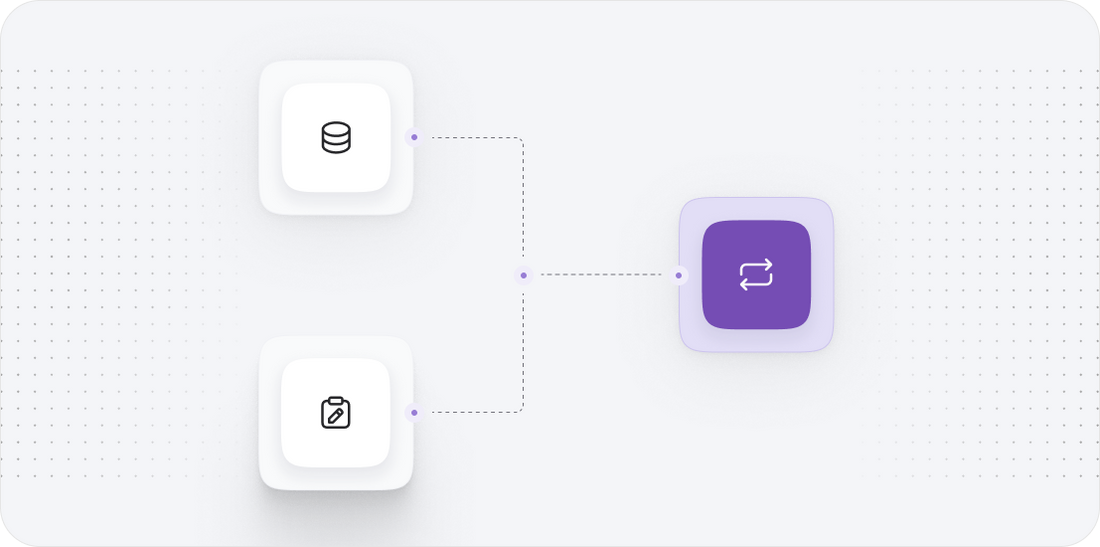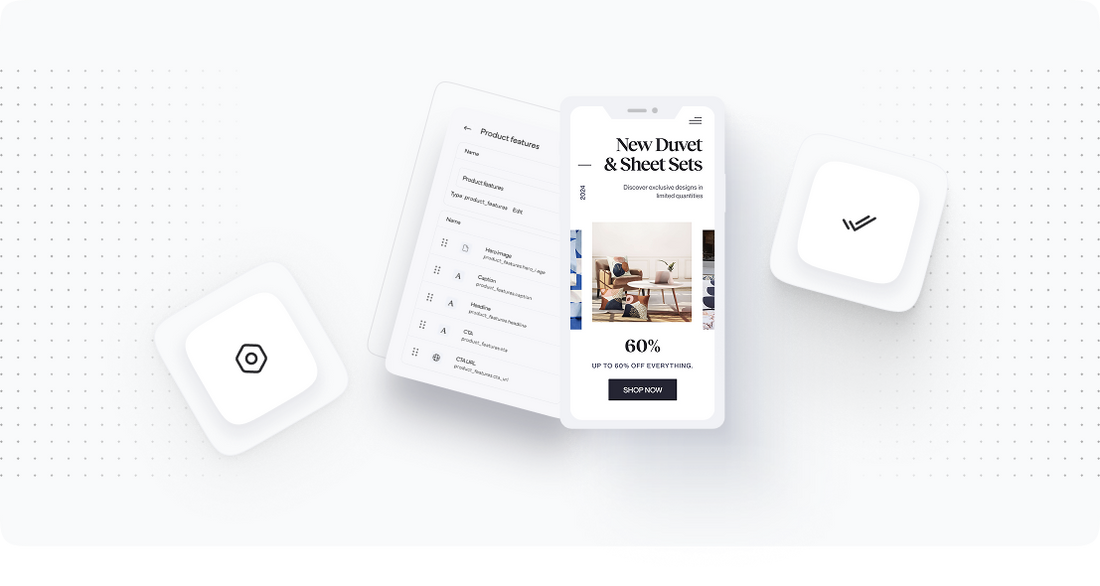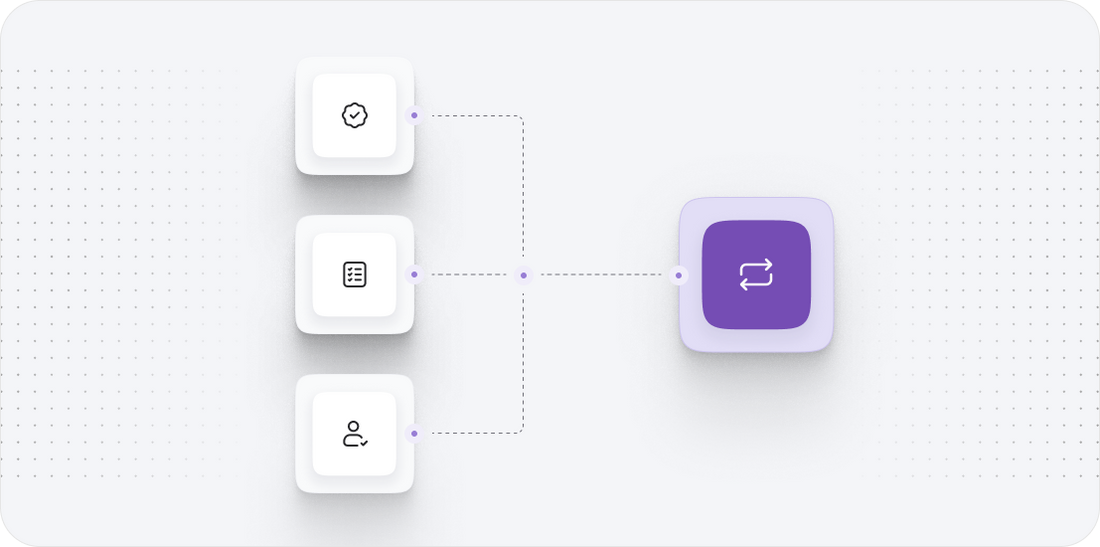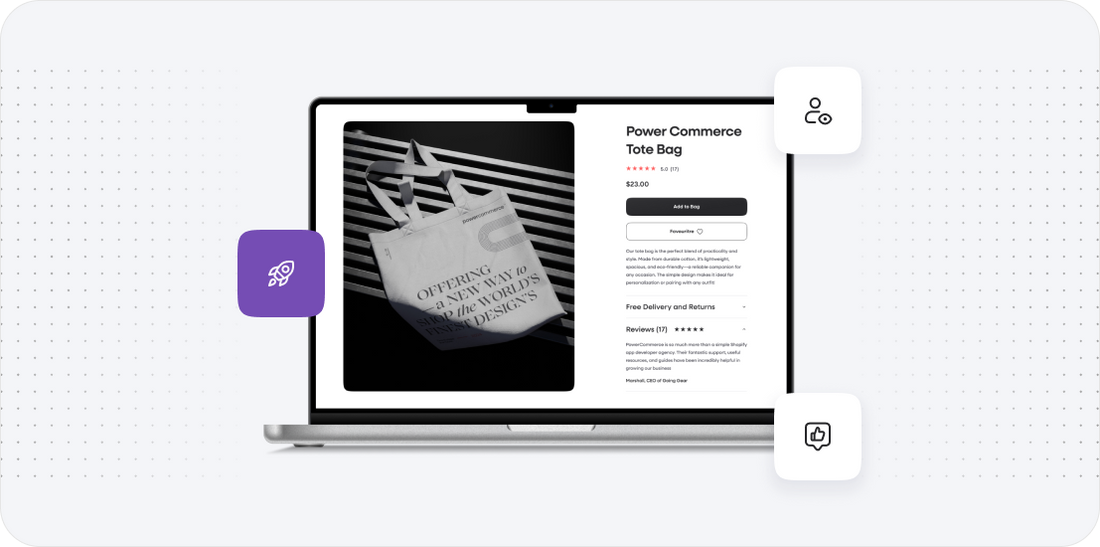





Shopify to Edrone
Migrating your store from Shopify to Edrone might seem daunting, but with proper planning and the right tools, it's a smooth process. Follow this step-by-step guide to ensure a successful transition.
Schedule a call
Step-by-Step Migration Guide: Shopify to Edrone migration guide
Step 1: Preparation and Planning
In this initial step, we will conduct a thorough analysis of your Shopify store's data and structure, laying the groundwork for a successful migration to Edrone.
Step 2: Data Backup and Export
In this step, we will secure your Shopify store's data, ensuring that all necessary information is backed up and ready for export to Edrone.
Step 3: Data Cleanup and Preparation for Edrone
This step focuses on refining your exported data to ensure it meets Edrone's requirements and is optimized for import.
Step 4: Setting Up Edrone
In this step, we will set up your Edrone account, configure the basic settings, and prepare the platform for data import.
Step 5: Importing Data into Edrone
Now we will import the cleaned and prepared data into Edrone, ensuring that all information is accurately transferred.
Step 6: Configuring Edrone Features
In this step, we will configure and customize Edrone's features to optimize your ecommerce strategy and enhance customer engagement.
Step 7: Testing and Validation
In this final preparatory step, we will conduct thorough testing and validation to ensure everything is functioning correctly post-migration.
Power Your Step - Get in Touch
Ready to migrate your Shopify store to Edrone? Contact us for expert migration support tailored to your business needs.
Step 1: Preparation and Planning
Preparation and planning are critical components of any migration project, especially when transitioning from Shopify to Edrone. This phase serves to identify potential challenges, establish clear objectives, and create a comprehensive migration strategy that ensures a smooth transition with minimal disruption to your business operations.
First, we will perform an in-depth analysis of your existing Shopify store. This involves reviewing your product catalog, customer data, order history, and any customizations or integrations you currently have in place. Understanding these elements helps us determine what needs to be migrated and how we can optimize the process for Edrone.
Next, we will set specific migration goals. This may include goals such as improving customer relationship management, enhancing marketing capabilities, or leveraging Edrone's advanced analytics features. By defining these objectives upfront, we can tailor our migration strategy to align with your business needs.
Once we have a clear understanding of your current setup and defined objectives, we will create a detailed migration plan. This plan will outline the necessary steps, timelines, and resources required for the migration. It is essential to involve key stakeholders in this process to ensure everyone is aligned and aware of their roles during the migration.
- Review Current Data: Assess your product catalog, customer data, and order history for completeness and accuracy.
- Define Migration Goals: Establish what you want to achieve with the migration, such as improved CRM and marketing capabilities.
- Create a Migration Plan: Outline steps, timelines, and resources needed for the migration.
During this preparation phase, we also recommend conducting a backup of your Shopify store data. This ensures that you have a secure copy of all your information in case of any unforeseen issues during the migration process. Choose a reliable backup tool or service, such as Rewind or Backupify, to create a complete backup of your store's data, including products, customer information, and order history.
With thorough preparation and planning, we set the stage for a successful migration, reducing the risk of data loss or downtime during the transition.

Step 2: Data Backup and Export
Data backup and export are crucial steps in the migration process, allowing us to safeguard your Shopify store's information before initiating the transfer to Edrone. We understand that your data is invaluable for your business, and taking the time to back it up ensures that you have a safety net during the migration.
To begin, we will utilize Shopify's built-in export functionalities to extract your store's data. This includes your product listings, customer data, order history, and any other relevant information. It is important to export this data in a format that is compatible with Edrone, typically CSV for products and customers.
Here’s how we can perform the backup and export:
- Access the Admin Dashboard: Log in to your Shopify admin panel.
- Export Products: Navigate to the
Productssection, select all products, and choose theExportoption. Save the file in CSV format. - Export Customers: Go to the
Customerssection, select all customers, and use theExportfeature, again saving it in CSV format. - Export Orders: Visit the
Orderssection, select the orders you wish to export, and utilize theExportoption.
Once all data is exported, we will conduct a thorough review of the CSV files to ensure that all necessary fields are present and correctly formatted. This review will help us identify any discrepancies or missing data that may require attention before importing into Edrone.
As an additional precaution, we recommend utilizing a third-party backup app such as Rewind or Backupify to create a full backup of your Shopify store. This serves as an extra layer of security, ensuring that you can recover your data if needed.
With your data securely backed up and exported, we are now prepared to move on to the next step of the migration process.

Step 3: Data Cleanup and Preparation for Edrone
Data cleanup and preparation are essential steps to ensure that the data we import into Edrone is accurate, complete, and optimized for the platform. This phase helps us avoid potential issues during the import process and enhances the overall performance of your CRM once the migration is complete.
We begin by examining the CSV files exported from Shopify. This involves a meticulous review of all fields, including product descriptions, customer information, and order details. Our goal is to identify any inconsistencies, duplicates, or irrelevant data that should be removed before import.
Here’s how we will approach data cleanup:
- Review Data Fields: Check for completeness across all relevant fields in your CSV files.
- Eliminate Duplicates: Use spreadsheet software to identify and remove any duplicate entries, particularly in customer data.
- Standardize Formats: Ensure that all data is in a uniform format, such as dates, currency, and product SKUs. This may involve adjusting text cases or removing unnecessary characters.
- Optimize Product Descriptions: Edit product descriptions to be concise, engaging, and optimized for SEO. This can include adding relevant keywords.
Once the cleanup process is complete, we will prepare the data for Edrone’s specific import requirements. Edrone may have unique field mappings or required fields that need to be accounted for in your CSV files. We will cross-reference our data against Edrone's specifications to ensure compatibility.
After verifying that the data is clean and correctly formatted, we will create a final version of the CSV files that is ready for import into Edrone. This meticulous preparation will significantly reduce the likelihood of errors during the migration process.

Step 4: Setting Up Edrone
Setting up your new Edrone account is a critical step in the migration process. This phase involves creating your Edrone account, configuring essential settings, and preparing the platform to accept the data we will be importing.
To begin, we will create your Edrone account by following the sign-up process on Edrone's website. It typically requires basic information such as your business name, email address, and password. Once your account is created, we will log into the Edrone dashboard to begin the configuration process.
Here’s how we will set up your Edrone account:
- Account Creation: Complete the registration process on Edrone’s website.
- Dashboard Overview: Familiarize ourselves with the Edrone dashboard, including navigation, features, and tools available.
- Configure Basic Settings: Set up your business profile, including your store name, logo, and contact information.
- Customize Preferences: Adjust settings related to customer communication, data privacy, and marketing preferences to align with your business strategy.
It’s important to ensure that your account settings reflect your brand identity and that we have established clear guidelines for customer data management in accordance with GDPR and other relevant regulations.
With the Edrone account set up and configurations in place, we will proceed to prepare for the data import process.

Step 5: Importing Data into Edrone
Importing data into Edrone is a pivotal step that requires careful execution to ensure that all information is accurately transferred from your Shopify store. This phase involves using Edrone’s built-in import functionalities to bring in your products, customers, and orders without losing any critical data.
Before we initiate the import, we will review the final versions of the CSV files prepared in the previous step to confirm that they meet all of Edrone's requirements.
Here’s how we will perform the data import:
- Access Edrone Dashboard: Log in to your Edrone account and navigate to the data import section.
- Select Data Types: Choose the categories of data we want to import, such as products, customers, and orders.
- Upload CSV Files: Upload the prepared CSV files for each data category, ensuring that we follow any specific import guidelines provided by Edrone.
- Mapping Fields: During the import process, we will map the fields in our CSV files to the corresponding fields in Edrone to ensure that all data is accurately placed.
After the import process is complete, we will conduct a thorough verification to ensure that all data has been imported correctly. This involves checking a sample of products, customer records, and orders to confirm their accuracy and completeness.
In the event of any discrepancies, we will troubleshoot and resolve the issues promptly to ensure that your Edrone account is fully populated with accurate data.

Step 6: Configuring Edrone Features
Configuring Edrone's features is essential to leverage the platform's capabilities effectively. This step involves customizing the features and tools available within Edrone to align with your ecommerce strategy and enhance customer engagement.
After successfully importing data, we will explore the various functionalities offered by Edrone. This includes configuring marketing automation, CRM features, and customer segmentation.
Here’s how we will approach the configuration of Edrone features:
- Set Up Marketing Automation: We will create automated workflows for customer engagement, such as welcome emails, cart abandonment reminders, and personalized product recommendations.
- Implement Customer Segmentation: Utilize Edrone's segmentation tools to categorize customers based on behaviors, preferences, and purchase history, allowing for targeted marketing.
- Customize Email Campaigns: Design and configure email templates for different customer segments, ensuring they reflect your brand identity and messaging.
- Integrate Analytics Tools: Set up analytics and reporting features to track performance metrics, customer interactions, and marketing campaign effectiveness.
By configuring these features, we enhance your ability to connect with customers, streamline marketing efforts, and drive sales growth. The goal is to create a fully functional Edrone environment that not only meets your needs but exceeds customer expectations.

Step 7: Testing and Validation
Testing and validation are critical final steps in our migration process to ensure that everything is functioning correctly in your new Edrone environment. This phase involves a comprehensive review of all migrated data, features, and functionalities to confirm that they operate as intended.
We will start by conducting a series of tests focused on key areas such as product listings, customer accounts, and order processing. This ensures that all data has been correctly imported and that all features are operational.
Here’s how we will execute the testing process:
- Verify Product Listings: Check that all products are accurately listed with correct descriptions, pricing, and images.
- Test Customer Accounts: Log in to customer accounts to ensure that all information is present and accessible.
- Simulate Order Processing: Conduct a test order to verify that the checkout process works smoothly and that notifications are triggered as expected.
- Review Marketing Automations: Ensure that automated emails and workflows are functioning correctly and delivering the intended messages.
After completing these tests, we will compile a report detailing any issues encountered and the corresponding resolutions. This documentation will serve as a reference for future operations and help maintain a smooth-running Edrone environment.
With thorough testing and validation, we confirm that your migration is successful and that your new Edrone account is ready for full operation.

Power Your Step - Get in Touch
At PowerCommerce, we understand that migrating your Shopify store to Edrone is a significant step in enhancing your ecommerce capabilities. Our team of experts is here to guide you through every phase of the migration process, ensuring a seamless transition that minimizes downtime and maximizes performance.
Don’t hesitate to reach out for personalized support tailored to your business's unique needs. Contact us today to leverage our extensive experience, innovative technology, and commitment to excellence in ecommerce migrations.
- Visit our contact page: PowerCommerce Contact
- Call us: 800-099-9090
- Email us: info@powercommerce.com
We look forward to helping you power your ecommerce journey with Edrone!
Stay aligned on what's happening in the commerce world
Trusted by 1000+ innovative companies worldwide
Schedule Your Migration Today
For businesses prioritizing simplicity, scalability, and robust support, Shopify is the clear winner.
Looking to migrate without hassle? Power Commerce can handle the entire process, ensuring smooth data transfer, store setup, and post-launch success.
Marka Marulića 2, Sarajevo, 71000 BiH
00387 60 345 5801
info@powercommerce.com


